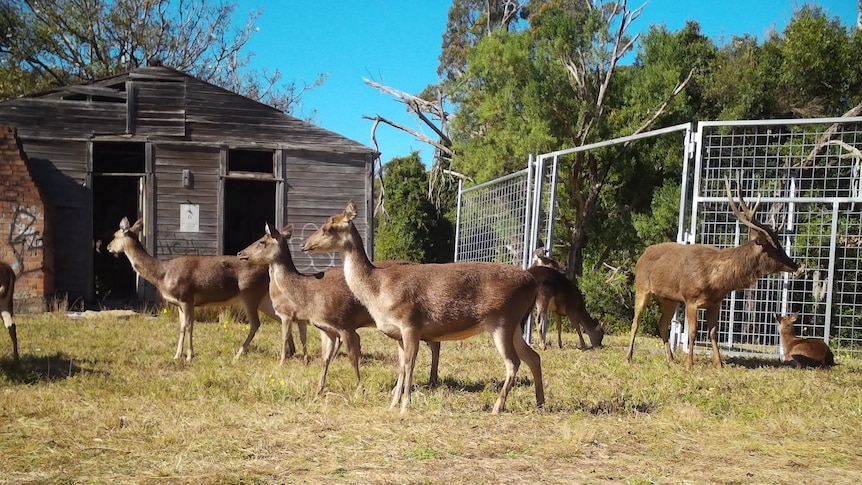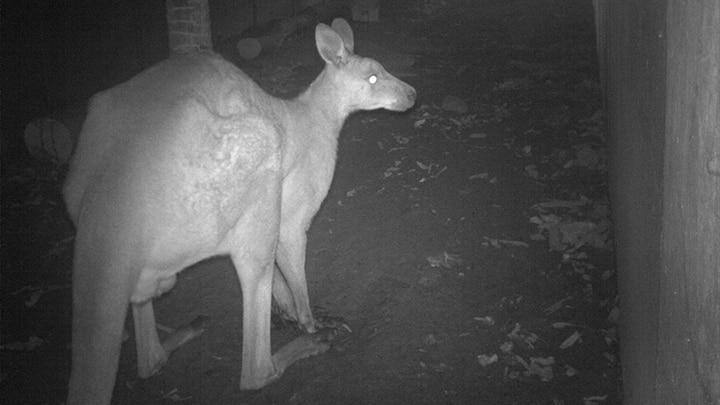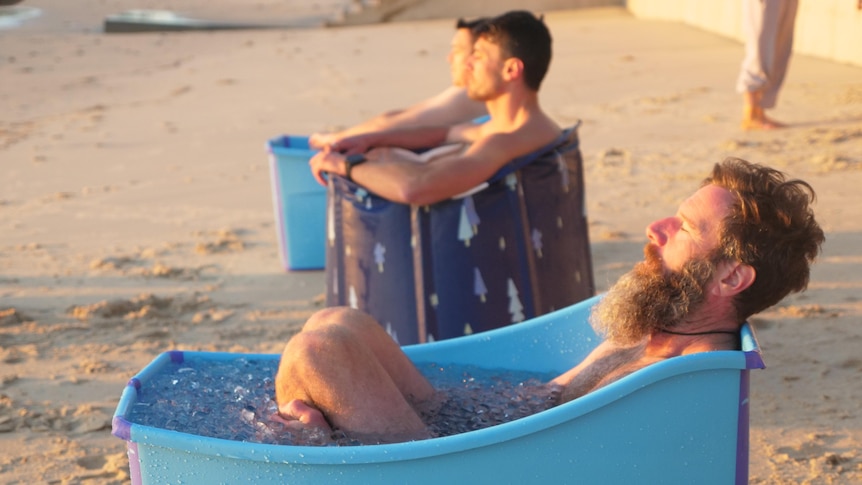When John Norton heard a noise outside his Port Macquarie home in the early hours of the morning he never expected to be attacked by a large deer.
Key points:
- The Invasive Species Council says feral deer numbers have “exploded” across NSW
- A Port Macquarie resident says a large deer charged at him in his front yard
- Feral deer can cause damage to natural environments and agriculture businesses
“At two in the morning I heard this banging noise,” Mr Norton said.
“I went around the corner and in a split second I saw a male deer with horns and he actually stood up, pointed at me and charged,” he said.
“I fell to the ground, then he stomped on me and bolted.”
Mr Norton said he called an ambulance and spent a night in hospital for observation, but managed to walk away with a couple of bruises.
Deer have become a seemingly incongruous regular sighting in suburban communities around NSW, particularly in Port Macquarie.
Locals have even reported seeing the animals walking in streets in the CBD during the night, while further north in Coffs Harbor there have been reports of deer on the busy Pacific Highway.
There are growing concerns about the increased spread of feral deer across northern and central New South Wales, particularly in suburban areas.
Invasive Species Council’s conservation director James Trezise said the feral deer herd have expanded across the state over the past 10 years.
“In about 2016, feral deer occupied 18 per cent of the state. They now occupy more than 22 per cent of the state. They’re really growing in the Mid North Coast, northern NSW and the Central West districts,” he said.
North Coast Local Land Service invasive pests team leader Dean Chamberlin urged people to stay clear of deer especially during rutting season, when deer mate.
“They’re protecting their own little space so they become a little bit more aggressive,” Mr Chamberlin said.
“They become more mobile and move around in areas where they’re not normally.”
There have also been increased sightings of large deer in the state’s north, from the NSW and Queensland border ranges and the Northern Tablelands.
Tweed Shire Council’s feral deer management officer Rachel Hughes said the Russian breed have been spotted near roads.
“Due to the unpredictability of deer and how fast they are… all of a sudden they will appear in front of you and you won’t have time to react,” she said.
“They can write off a vehicle with no problem at all.”
Residents across the Hunter region report seeing deer almost daily in some areas.
The Lake Macquarie City Council is funding a University of Technology Sydney project to gauge the extent of the issue.
“We need to know whether they are present, how many are present and what impact they’re having before we can actually make some sensible decisions about how to manage them,” UTS environmental sciences program director Leigh Martin said.
Population has ‘exploded’
The Invasive Species Council said feral deer were likely Australia’s worst emerging pest problem, causing damage to natural environments and agriculture businesses.
“feral deer [numbers] have just exploded across the state and it’s creating a really serious challenge for management because they will keep moving north,” Mr Tresize said.
“Unless we introduce containment and control measures that really stop these populations spreading … we’re going to see deer just march straight up into Cape York.”
The animal was originally introduced in Australia for hunting and farming purposes. But numbers have continued to grow, largely due to a lack of natural predators.
Mr Trezise said the animal’s grazing and hard hooves could have a destructive effect on vegetation.
“A very small population of deer can have a serious impact on threatened species.”
Control efforts ongoing
North Coast Local Land Service has continued its attempt to control the population through hunting methods and a trapping trial.
Mr Chamberlin said the medium-scale trapping program had been successful in keeping deer numbers static, despite delays due to recent flooding events.
“That will hopefully bring numbers down to a bigger degree so they don’t have to move into areas of backyards or retirement villages.”
Mr Chamberlin said people should report feral deer sightings to the LLS or the FeralScan app.
“Sight them, report them and leave them alone.”
.


